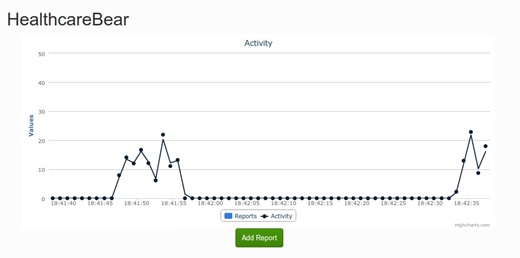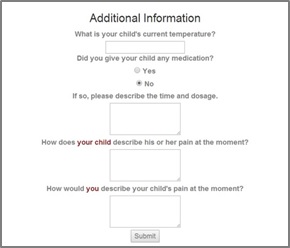Doctors and nurses have a variety of tools that allow them to assess the pain of children on-site in an emergency room or clinic. But what happens after a child is sent home? From speaking with nurses and doctors at a Hacking Health competition, Michael Sterle-Contala, Jeff Blum and I learned that tired and stressed parents typically have nothing to rely on but easily-forgotten anecdotal evidence to relay their experience during on-site visits. At the same time, very young, chronically ill children might be reluctant to report that they are pain, because they’re scared of being taken back to see the doctor.
So we tackled these problems by improving off-site assessment of children’s pain. First, we give the child a stuffed companion, an object with which children are already familiar and comfortable. The bear is fitted with a Texas Instrument Sensor Tag, which features an accelerometer, and can communicate with a parent’s smartphone via Bluetooth. When they are in pain, all the child has to do is shake the bear, and the parent’s smartphone screen will gradually turn red. More pain, more shaking, more red.
The data captured by the accelerometer is also sent to our cloud server, logged, and displayed live on our site, allowing the parents to have a closer look if necessary. Should the parents notice exceptional pain, they can fill out a pain assessment report directly on the website. The form for this report is based on the FLACC pain scale, commonly used by doctors and nurses. However, our form also allows parents to enter extra information that may be useful when discussing the child’s condition with a practitioner in the future: did they give the child any medication? What was the child’s temperature? How did the child describe the pain? How would the parents describe the pain? Once all this information is submitted, it is also saved to our cloud server.

The next time the family visits a practitioner, the data entered in the reports during the pain events, as well as the continuous data captured by the child’s bear can be reviewed on our website. By having easy and instant access to all this information, a doctor or nurse can gain a more complete picture of the child’s on-going well-being in a natural context, during their everyday life, away from the clinic or hospital.
